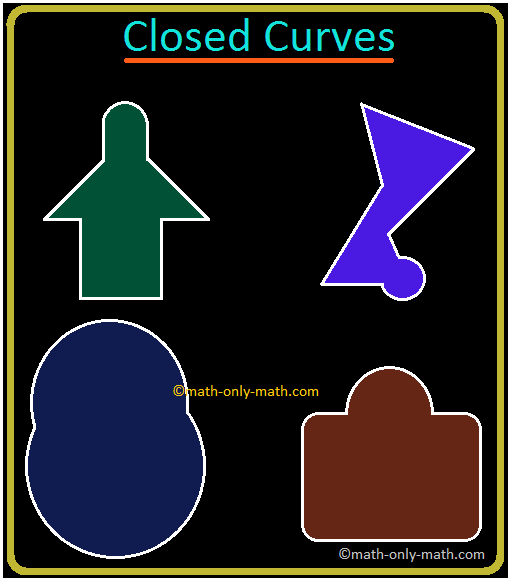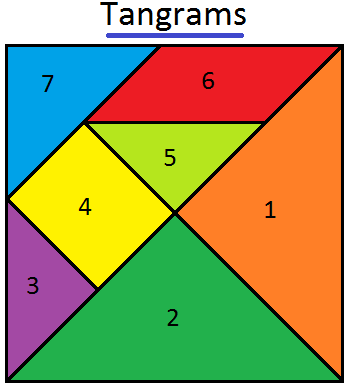Events in Probability
The outcomes of a random experiment are called events connected with the experiment.
For example; ‘head’ and ‘tail’ are the outcomes of the random experiment of throwing a coin and hence are events connected with it.
Now we can distinguish between two types of events.
(i) simple event
(ii) compound event
Simple or Elementary Event:
If there be only one element of the sample space in the set representing an event, then this event is called a simple or elementary event.
For example; if we throw a die, then the sample space, S = {1, 2, 3, 4, 5, 6}. Now the event of 2 appearing on the die is simple and is given by E = {2}.
In other words,
If an event E consists of only one outcome of the experiment then it is called an elementary event.
For example:
In tossing a coin, E = event of getting a head, F = event of getting a tail are both elementary events.
In throwing a die,
A = event of getting 5, is an elementary event while
B = event of getting an even number, is not an elementary event because its favourable outcomes are 2, 4, 6 (three outcomes).
Remember: The sum of probabilities of all elementary events of an experiment is equal to 1.
Compound Event:
If there
are more than one element of the sample space in the set representing an event,
then this event is called a compound event.
For example; if we throw a die, having S = {1, 2, 3, 4, 5, 6}, the event of a odd number being shown is given by E = {1, 3, 5}.
Odd in favor of an event A is defined as; number of favorable events/number of unfavorable events.
Similarly, odds against an event A = number of unfavorable events/number of favorable events.
Certain Events / Sure Events:
An event which is sure to occur at every performance of an experiment is called a certain event connected with the experiment.
For example, “Head or Tail’ is a certain event connected with tossing a coin.
Face-1 or face-2, face-3, ……, face-6 is a certain event connected with throwing a die.
Certain Events also known as Sure Event.
Sure Event: An event E is called a sure event if P(E)= 1. This happens when all outcomes of the experiment are favourable outcomes.
For example, in throwing a die, the event of getting a natural number less than 7 is a sure event.
Impossible Even:
An event which cannot occur at any performance of the experiment is called an
possible event.
Following are such examples ----
(i) ‘Seven’ in case of throwing a die.
(ii) ‘Sum-13’ in case of throwing a pair of dice.
In other words,
An event E is called an impossible event if P(E) = 0. This happens when no outcome of the experiment is a favourable outcome.
For example, in throwing a die, the event of getting a natural number greater than 6 is an impossible event.
Equivalent Events / Identical Events:
Two events are said to be equivalent or identical if one of them implies and implied by other. That is, the occurrence of one event implies the occurrence of the other and vice versa.
For example, “even face” and “face-2” or “face-4” or “face-6” are two identical events.
Equally Likely Events:
When there is no reason to expect the happening of one event in preference to the other, then the events are known equally likely events.
For example; when an unbiased coin is tossed the chances of getting a head or a tail are the same.
Exhaustive Events:
All the possible outcomes of the experiments are known as exhaustive events.
For example; in throwing a die there are 6 exhaustive events in a trial.
Favorable Events:
The outcomes which make necessary the happening of an event in a trial are called favorable events.
For example; if two dice are thrown, the number of favorable events of getting a sum 5 is four, i.e., (1, 4), (2, 3), (3, 2) and (4, 1).
Mutually Exclusive Events:
If there be no element common between two or more events, i.e., between two or more subsets of the sample space, then these events are called mutually exclusive events.
If E1 and E2 are two mutually exclusive events, then E1 ∩ E2 = ∅For example, in connection with throw a die “even face” and “odd face” are mutually exclusive.
But” odd-face” and “multiple of 3” are not mutually exclusive, because when “face-3” occurs both the events “odd face” and “multiply of 3” are said to be occurred simultaneously.
We see that two simple-events are always mutually exclusive while two compound events may or may not mutually exclusive.
Complementary Event:
An event which consists in the negation of another event is called complementary event of the er event. In case of throwing a die, ‘even face’ and ‘odd face’ are complementary to each other. “Multiple of 3” ant “Not multiple of 3” are complementary events of each other.
In other words,
If E and F are two events for an experiment such that every favourable outcome for the event E is not a favourable outcome for the event F and everyy unfavourable outcome for the event E is a favourable outcome for F then F is called the complementary event of the event E, and F is denoted by \(\overline{E}\).
For example: In the throw of a die if
E = event of getting an odd number
then \(\overline{E}\) = event of not getting an odd number, that is, event of getting an even number.
Remember: P(E) + P(\(\overline{E}\)) = 1, that is, the sum of the probabilities of an event and its complementary event is 1.
Not happening of the event E is called the complementary event of the event E. It is denoted by E’ or E or Ec.Note that complementary event of certain event is an impossible event and vice versa.
Complementary Event Verification by example:
A bag contains 4 red balls and 5 green balls. A ball is drawn from the bag at random.
Let E = event of drawing a red ball.
Then, \(\overline{E}\) = event of not drawing a red ball
= event of drawing a green ball.
Now,
P(E) = \(\frac{\textrm{Number of Outcomes Favourable to E}}{\textrm{Total Number of Possible Outcomes}}\) = \(\frac{4}{9}\),
[Since there are 4 red balls].
P(\(\overline{E}\)) = \(\frac{\textrm{Number of Outcomes Favourable to} \overline{E}}{\textrm{Total Number of Possible Outcomes}}\) = \(\frac{5}{9}\),
[Since there are 5 green balls].
So, P(E) + P(\(\overline{E}\)) = \(\frac{4}{9}\) + \(\frac{5}{9}\) = 1.
Therefore, P(E) = 1 - P(\(\overline{E}\)) and P(\(\overline{E}\)) = 1 - P(E).
Event points, Even Space:
Let an experiment be donated by E. The simple events connected with E will be called even points: and the set S of all possible even points is called event space of E.
Any subset A of S is obviously an event. If A contains single point then it is a simple event, if A contains more than one point of S then A is compound event.
Then entire space S is certain event and empty set ∅ is impossible event.
● Probability
- Probability
- Definition of Probability
- Random Experiments
- Experimental Probability
- Events in Probability
- Empirical Probability
- Coin Toss Probability
- Probability of Tossing Two Coins
- Probability of Tossing Three Coins
- Complimentary Events
- Mutually Exclusive Events
- Mutually Non-Exclusive Events
- Conditional Probability
- Theoretical Probability
- Odds and Probability
- Playing Cards Probability
- Probability and Playing Cards
- Probability Rolling a Die
- Probability for Rolling Two Dice
- Probability for Rolling Three Dice
- Solved Probability Problems
- Probability Questions Answers
From Events in Probability to HOME PAGE
Didn't find what you were looking for? Or want to know more information about Math Only Math. Use this Google Search to find what you need.
Recent Articles
-
Fundamental Geometrical Concepts | Point | Line | Properties of Lines
Apr 18, 24 02:58 AM
The fundamental geometrical concepts depend on three basic concepts — point, line and plane. The terms cannot be precisely defined. However, the meanings of these terms are explained through examples. -
What is a Polygon? | Simple Closed Curve | Triangle | Quadrilateral
Apr 18, 24 02:15 AM
What is a polygon? A simple closed curve made of three or more line-segments is called a polygon. A polygon has at least three line-segments. -
Simple Closed Curves | Types of Closed Curves | Collection of Curves
Apr 18, 24 01:36 AM
In simple closed curves the shapes are closed by line-segments or by a curved line. Triangle, quadrilateral, circle, etc., are examples of closed curves. -
Tangrams Math | Traditional Chinese Geometrical Puzzle | Triangles
Apr 18, 24 12:31 AM
Tangram is a traditional Chinese geometrical puzzle with 7 pieces (1 parallelogram, 1 square and 5 triangles) that can be arranged to match any particular design. In the given figure, it consists of o… -
Time Duration |How to Calculate the Time Duration (in Hours & Minutes)
Apr 17, 24 01:32 PM
We will learn how to calculate the time duration in minutes and in hours. Time Duration (in minutes) Ron and Clara play badminton every evening. Yesterday, their game started at 5 : 15 p.m.




